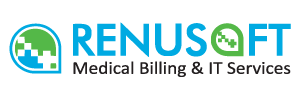Navigating patient collections can be one of the trickiest aspects of running a healthcare practice, especially when patients face financial struggles. In the current environment, healthcare affordability can seem out of reach for many. So, when is the right time to follow up on unpaid patient balances, and how can providers do this effectively without sounding overbearing? The key is empathy and sensitivity, ensuring you maintain a positive relationship with patients while also securing necessary payments.
Waiting several months before sending a follow-up invoice might seem like a solution, but it’s not always effective. The longer you wait, the harder it becomes to collect. Accounts that are left delinquent for too long have a reduced chance of being paid. Instead, providers can adopt an early out billing cycle—an approach that focuses on reaching out to patients early, typically between 30 and 60 days after the bill is issued. This proactive strategy not only helps you recover revenue but also builds trust with your patients.
Why Should Providers Consider an Early Out Billing Cycle?
Today’s healthcare providers are facing an uphill battle with various financial challenges like Medicare cuts, increasing claim denials, and rising operational costs. In such an environment, any strategy that accelerates revenue collection and boosts cash flow is worth exploring. Here’s why an early out billing cycle is so beneficial:
- Reduces Administrative Burden
When you follow up on unpaid bills earlier, patients tend to pay sooner, reducing the need for constant follow-ups and collection efforts. This makes the entire process more efficient. - Catches Billing Errors Faster
Early communication with patients allows you to identify potential billing or coding errors more quickly. If issues arise, you can address them in a timely manner, preventing unnecessary delays. - Improves Financial Forecasting
An up-to-date accounts receivable (A/R) balance leads to more accurate financial forecasting. With an early out strategy, you can predict your revenue more effectively, helping you plan for the future. - Enhances Patient Relationships
Building trust is crucial. When you reach out early, you allow your patients to make payment arrangements, ask questions about their bills, and discuss financial assistance programs. This approach fosters positive relationships rather than creating frustration. - Promotes Faster Cash Flow
By encouraging timely patient payments, you keep cash flowing into your practice, which is essential for maintaining operations. - Reduces Bad Debt
When patients are given the opportunity to discuss payment plans, they are more likely to pay their bills rather than letting them go unpaid, thus reducing the likelihood of writing off debt.
Additionally, with the recent changes to the Consumer Financial Protection Bureau’s ruling on medical debt reporting, providers can benefit from an early out approach to avoid writing off debts that may never make it to collections.
How Can Providers Develop an Effective Early Out Billing Cycle?
To implement a successful early out billing cycle, follow these steps:
- Establish Clear Guidelines and Timelines
Understanding when patients typically pay their bills—and when they are less likely to do so—is crucial. Analyze your historical data to determine patient behavior and create patient-specific timelines. These insights will help you create an effective follow-up schedule. - Choose Your Communication Methods
How do you want to reach out to patients? Will it be through phone calls, automated emails or text messages, or paper letters? Tailoring communication to your patients’ preferences increases engagement. Offering personalized follow-ups instead of generic messages can significantly improve response rates. Make sure each communication includes an option for patients to ask questions, request financial assistance, or set up payment plans. Also, integrating electronic payment options, like online payments and autopay, is essential. - Monitor the Effectiveness of the Early Out Cycle
Is the new billing cycle working? Keep track of key metrics such as collection rates, aging accounts receivable, and patient satisfaction. Gathering feedback from patients will help you refine your process. Make necessary adjustments, retrain staff, and continuously improve your approach.
Unlock Stalled Revenue with Early Out Billing
Early out billing offers a proactive alternative to waiting until accounts become overdue or relying on expensive collection agencies. By contacting patients earlier in the billing process and offering them flexible payment solutions, you can recover more revenue while fostering a better patient experience. Whether it’s through personalized text messages, emails, or paper statements, your practice can benefit from more timely collections and stronger patient relationships.
At Renusoft, we help healthcare providers like you navigate the complexities of patient collections. With our innovative solutions, you can streamline the billing cycle, boost cash flow, and maintain positive patient relationships. Discover how our platform can make your billing process smoother and more effective.
Ready to unlock your practice’s full potential? Contact us today at renusoft.net and see how we can help you enhance your patient collections and financial stability!



